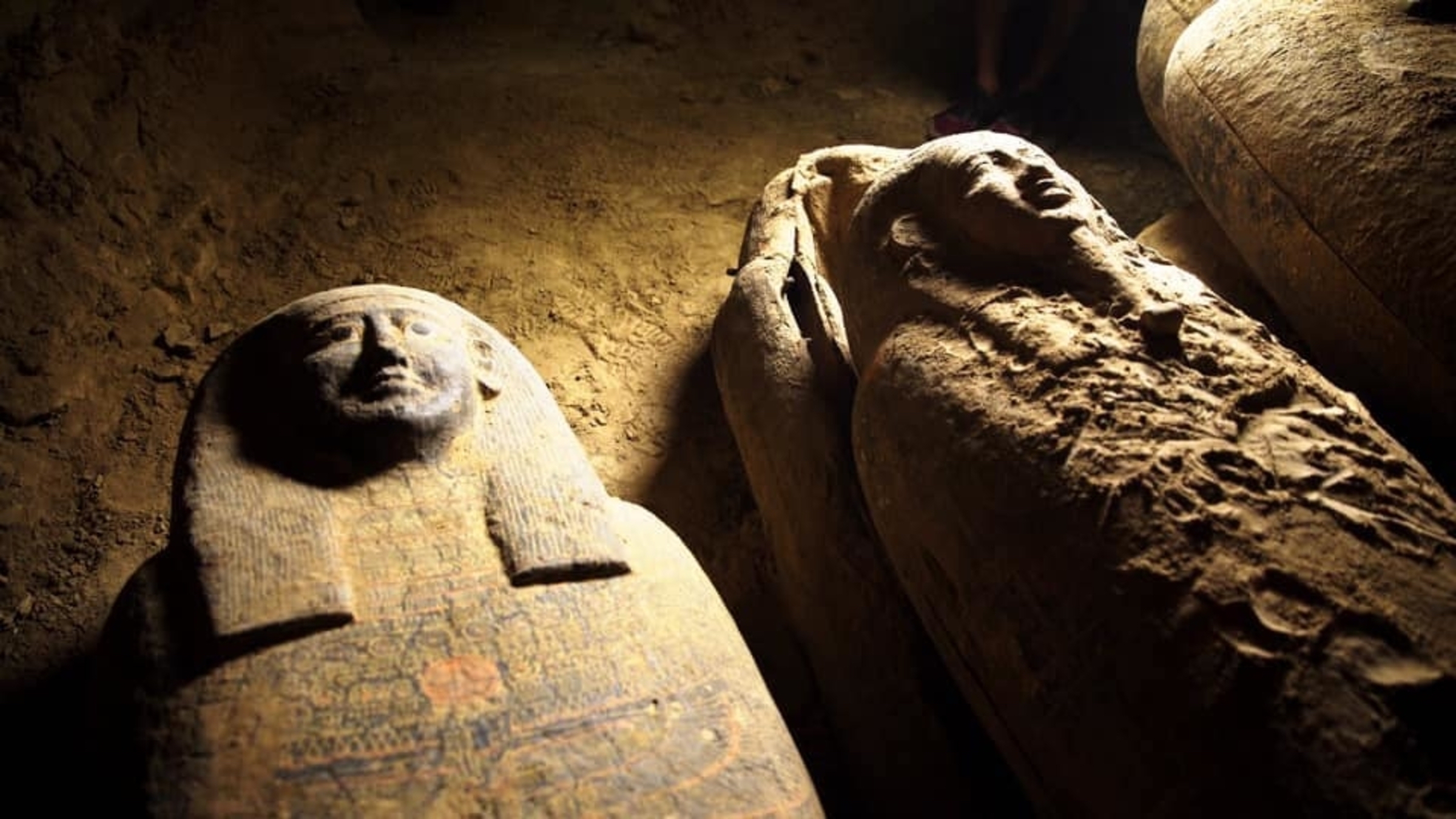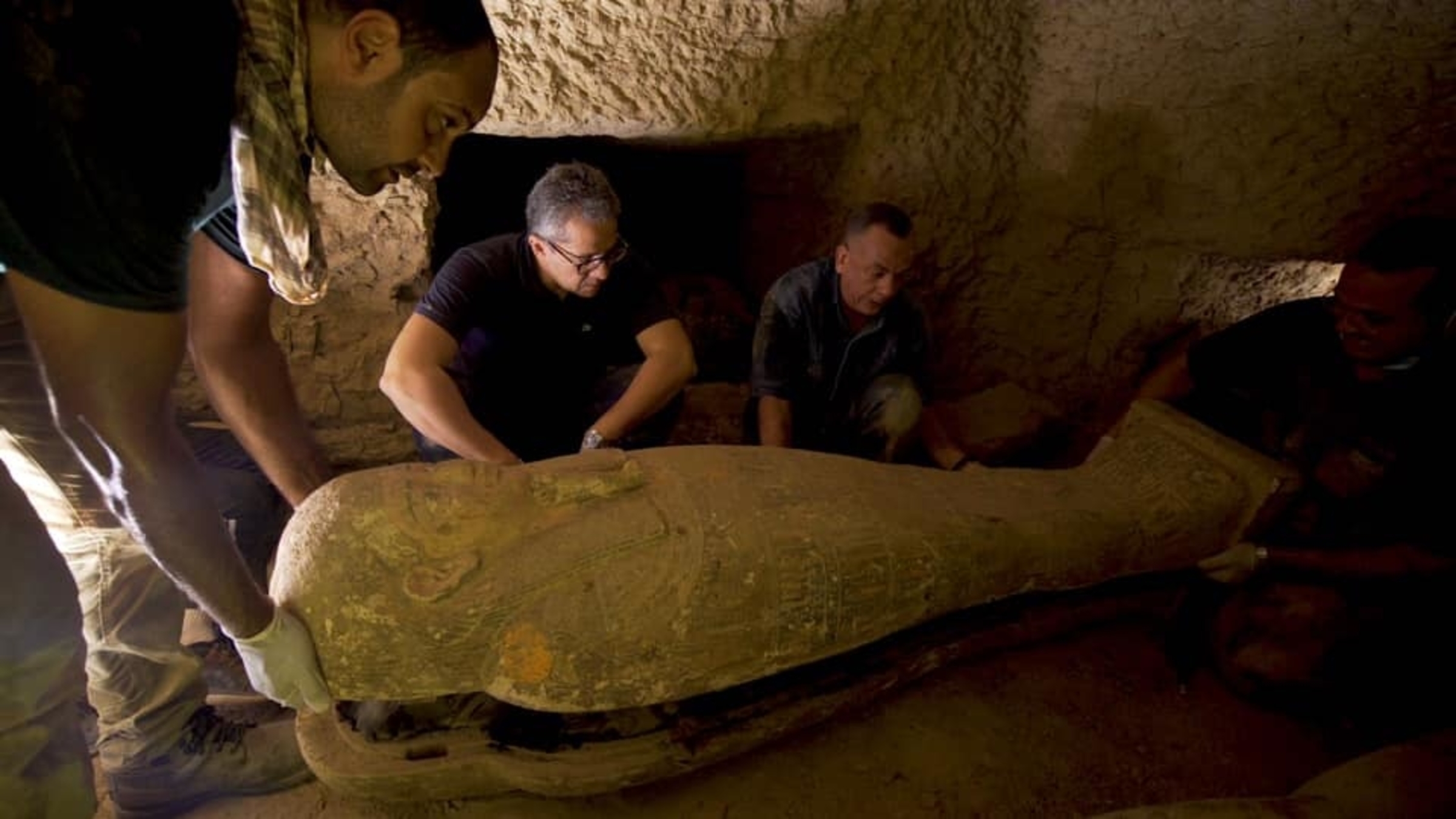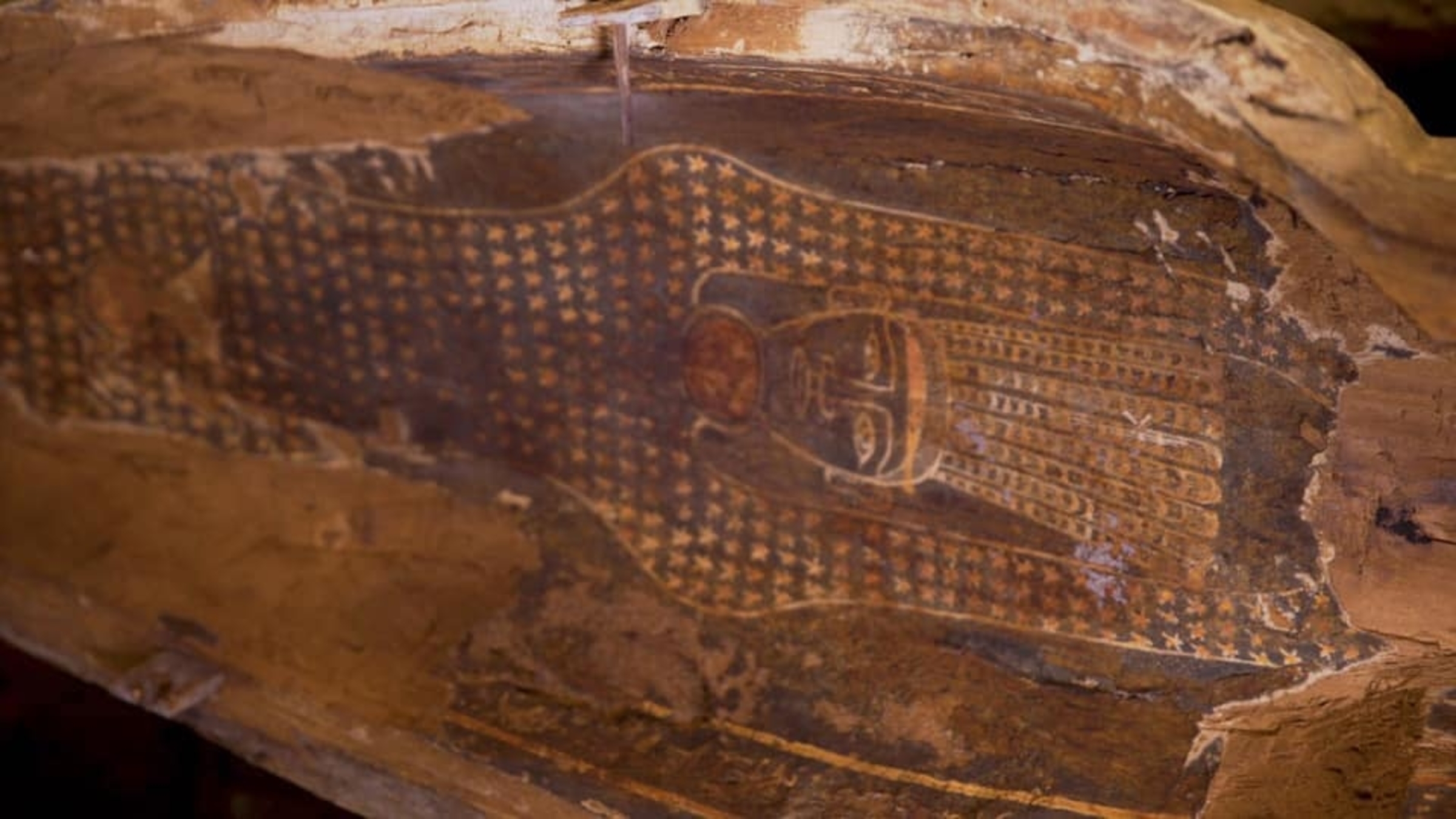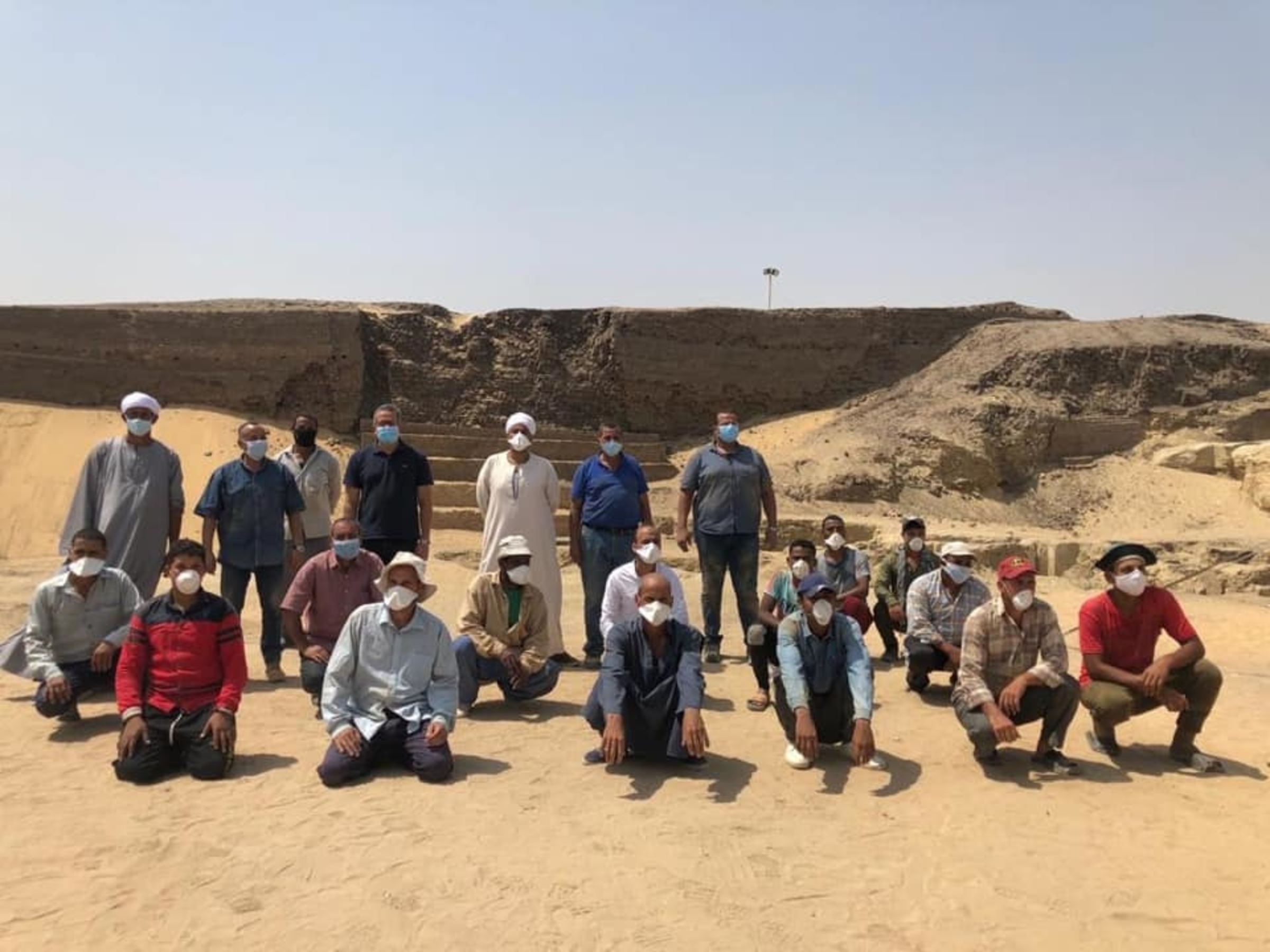13 mummy coffins stacked in a well unearthed in ancient Egyptian necropolis
The intricately painted coffins were stacked on top of each other.

Archaeologists have discovered more than 13 ancient Egyptian coffins piled one on top of the other within a burial well at the desert necropolis of Saqqara, according to the Egyptian Ministry of Tourism and Antiquities.
The 2,500-year-old wooden coffins are so well preserved that the intricate designs on them, painted in blue, gold, white, black and red, are still visible.
The identity of the deceased who were buried within the coffins remains a mystery; archaeologists have yet to look inside the sealed coffins, which haven't been opened since the bodies were interred within, the Egyptian Ministry of Tourism and Antiquities reported in a Sept. 6 Facebook post.
Related: Image gallery: Mummy evisceration techniques
Archaeologists found the coffins in a well measuring nearly 40 feet (11 meters) deep. It's likely that more of these coffins will be found within the niches located along the sides of the well, the ministry noted.
"[It's] an indescribable feeling when you witness a new archeological discovery," Khaled Al-Anani, the minister of the Egyptian Ministry of Tourism and Antiquities, wrote on Twitter when he tweeted a teaser of the discovery on Sept. 6.
شعور لا يقارن كلما تشهد كشف اثري جديد،انتظروا الاعلان عن كشف اثري جديد بسقارة، شكرا لزملائي بالوزارة.An indescribable feeling when you witness a new archeological discovery.Stay tuned for the announcement of a new discovery in SaqqaraThank you to my colleagues in the ministry pic.twitter.com/RpgK6TmREoSeptember 6, 2020
These newfound coffins are the largest finding at Saqqara since 30 wooden coffins were discovered in a cache at Al-Assasif cemetery within the necropolis in October 2019, the ministry said.
Get the world’s most fascinating discoveries delivered straight to your inbox.






The newly discovered stacked coffins, and even the cache at Al-Asasif, are just a few of the vast number of human and animal remains discovered at Saqqara, a gigantic necropolis and pyramid complex at Memphis, the first capital of Egypt, according to the American Research Center in Egypt (ARCE), which wasn't involved in the new find. Located about 20 miles (30 kilometers) south of Cairo, Saqqara was also the final resting place of the kings who ruled during the first and second dynasties, including Djoser, the first king of the third dynasty, who had the famous step pyramid at Saqqara constructed to house his remains, ARCE reported.
Egypt faced tumultuous political change when the recently discovered deceased were alive in about 500 B.C. In 525 B.C., the king of Persia, known as Cambyses II, conquered Egypt and incorporated it into the Persian Empire, according to Encyclopedia Britannica. During this period of Persian rule, recognized as Dynasty 27, the Persians exercised their power through a resident governor, known as a satrap, according to the Metropolitan Museum of Art in New York City.
During this time, some Persian rulers invested in Egypt. For instance, when the Persian king Darius I (ruled from 522-486 B.C.) held power, Egypt thrived as the Persians ordered the construction of temples and public works, redid the legal system and strengthened the economy, the Met reported. Persian rule ended in 404 B.C., when local Egyptians took back the throne.
Originally published on Live Science.

Laura is the managing editor at Live Science. She also runs the archaeology section and the Life's Little Mysteries series. Her work has appeared in The New York Times, Scholastic, Popular Science and Spectrum, a site on autism research. She has won multiple awards from the Society of Professional Journalists and the Washington Newspaper Publishers Association for her reporting at a weekly newspaper near Seattle. Laura holds a bachelor's degree in English literature and psychology from Washington University in St. Louis and a master's degree in science writing from NYU.


